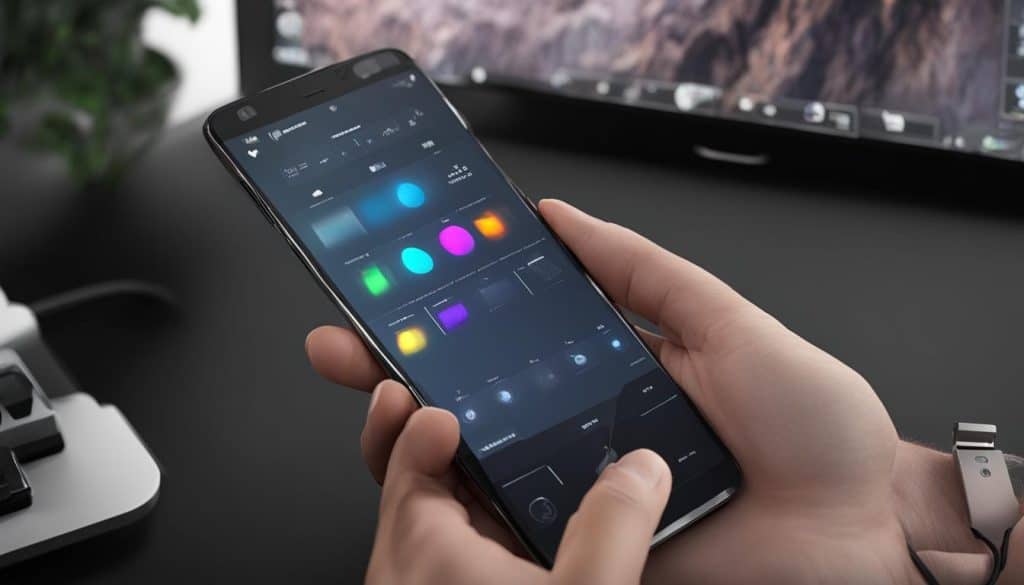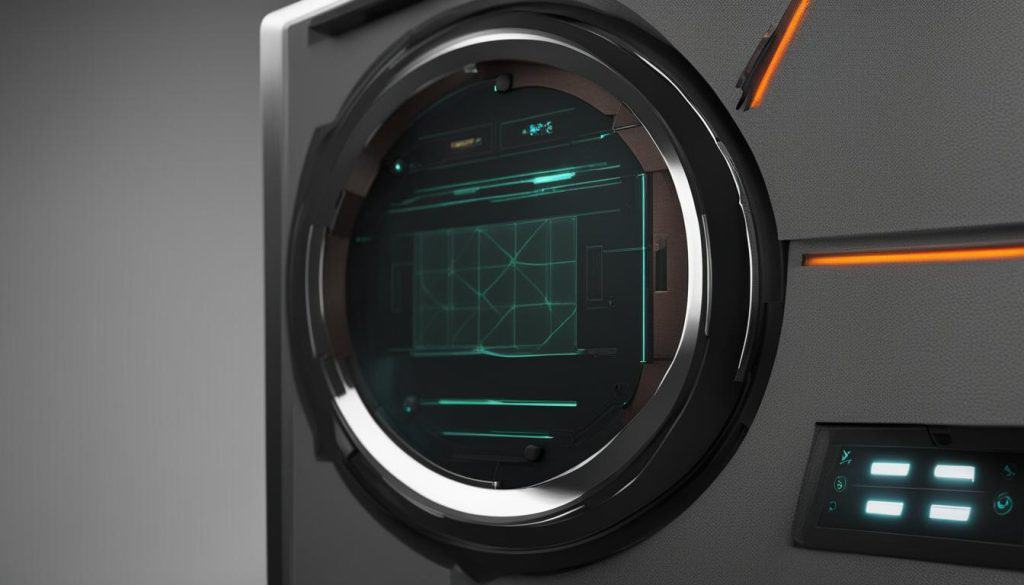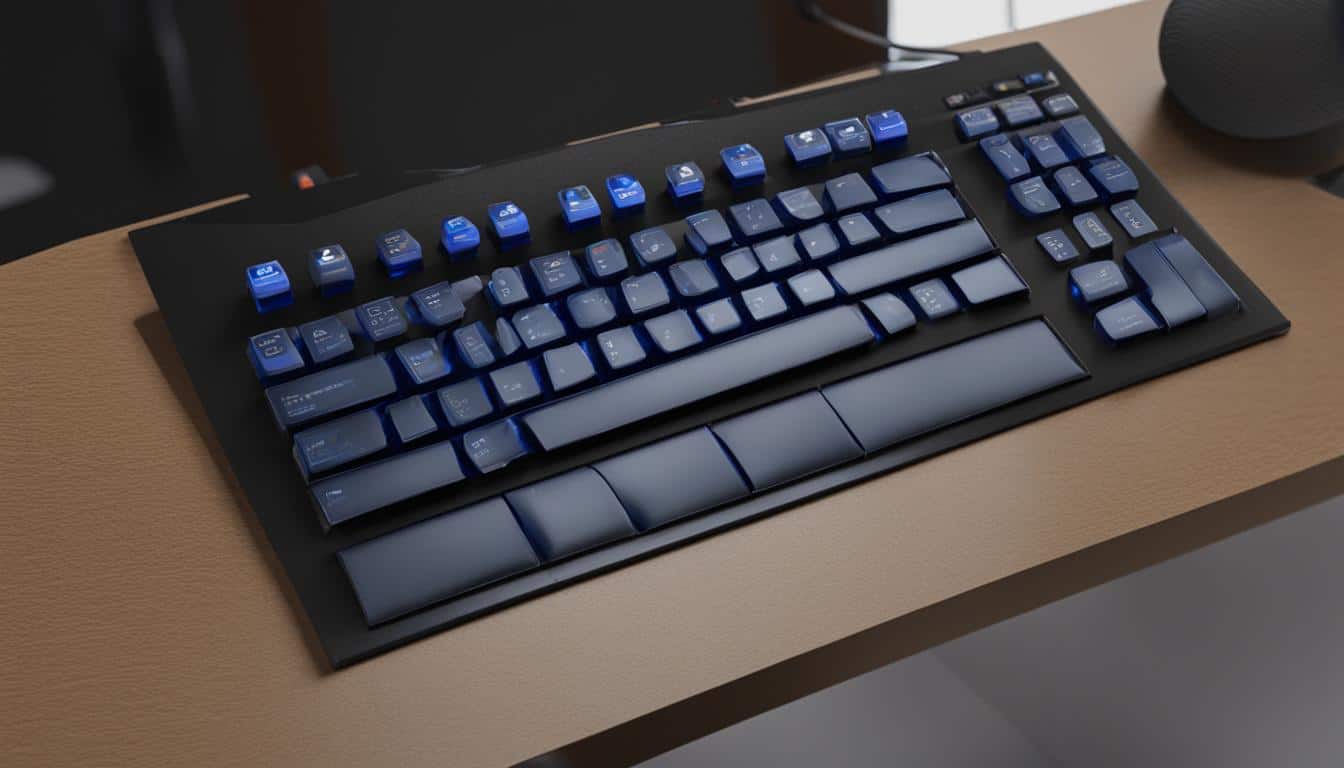If you’re in the market for a new blender, choosing the right controls can make all the difference in your blending experience. With different types of controls, features, and price points available, it can be overwhelming to make a decision.
That’s why we’ve put together a comprehensive guide to help you navigate the pros and cons of blender controls.
In this article, we’ll cover everything from mechanical buttons to touch panels and smartphone app integration. We’ll help you understand the benefits and drawbacks of each control type, and what to look for when selecting a blender with the right controls for your needs.
Whether you’re an avid health enthusiast or a casual cook, keep reading to discover the key things you need to know about blender controls.
1. Mechanical Buttons: Tactile Feedback and Reliability
When it comes to blender controls, mechanical buttons are a popular option due to their reliability and budget-friendly price point.
These buttons offer the advantage of tactile feedback – providing a satisfying click when pressed, giving you a clear indication of when you have activated a function. This feedback is crucial for those who prefer the sensation of a physical button over the flat and smooth touch panels.
Another key advantage of mechanical buttons is their durability. They are known for their reliable and hard-wearing quality, making them an excellent choice for long-term use.
However, they may be prone to wear and tear over time and have limited functionality compared to modern touch panels. For example, you may not be able to customize your controls or access advanced settings with mechanical buttons.
It’s also worth noting that mechanical buttons may become messy and difficult to clean if they get wet. Be cautious when using them while cooking or cleaning the blender after use.
2. Touch-Sensitive Panels: Sleek Look and Customizable Layouts
If you prefer a modern and sleek look in your kitchen appliances, touch-sensitive panels may be just what you need. Not only are they stylish, but they also offer customizable layouts, allowing you to arrange the controls to fit your needs.
These panels are also easy to clean, which is particularly essential when working with messy ingredients. A simple wipe down is all that is needed to keep them looking like new.
| Pros | Cons |
|---|---|
| Customizable layouts | Prone to fingerprints |
| Easy to clean | Require precise pressure for activation |
However, due to their touch-sensitive nature, these panels are prone to fingerprints, which may require frequent cleaning. The controls require precise pressure for activation, which may present a challenge for some users who are not yet accustomed to using touch controls.
3. Smartphone App Integration: Remote Control and Convenience
If you’re someone who values convenience and staying on top of technology, then smartphone app integration may be worth considering for your blender controls.
With app integration, you can remotely control your blender t ough your phone, giving you the freedom to walk around and multitask while still keeping an eye on your blend.
You can also access recipes and presets t ough the app, allowing you to explore new culinary horizons and streamline your blending process.
Furthermore, t ough app integration, you can receive firmware updates to ensure your blender is always up-to-date and functioning at optimal capacity.
Keep in mind that app integration does rely on your phone battery and connectivity, so it may not be ideal for everyone.
If you do decide to invest in app integration for your blender controls, take some time to familiarize yourself with the interface. Some users find app integration to be complex, so it’s important to ensure that you feel comfortable navigating the digital control panel.

4. Learning Curve: Different Control Types and Familiarity
When it comes to choosing the right blender controls, one important factor to consider is the learning curve. Different control types have varying levels of user-friendliness. Touch screens might seem intuitive, but complex interfaces can be overwhelming for some users.
On the other hand, mechanical buttons are familiar and straightforward but may have limited functionality.
When deciding which control type is right for you, it’s essential to consider your comfort level and familiarity with different control types.
If you’re used to touch screens, a touch-sensitive panel might be a natural fit. But if you prefer physical controls, mechanical buttons might be the better choice.
Ultimately, the right control type is one you feel comfortable using and can quickly learn. Whether you prefer touch screens or mechanical buttons, choose a blender with controls that you find intuitive and user-friendly.
5. Customization: Personalized Presets and Layouts
If you like a tailored experience with your blender, then customization is the way to go. Blenders featuring touch panels offer a high level of customization that can be personalized according to your preferences.
You can create your own presets, rearrange function buttons and choose from pre-designed layouts to suit your specific needs. This level of customization allows you to get the most out of your blender by tailoring it to match your precise preferences.

This feature is particularly beneficial if you often use specific ingredients or follow particular recipes. You can set your blender to have specific settings or functions that you use often.
For instance, you could create a preset to blend smoothies or create a custom layout with easily accessible function buttons. In essence, growing accustomed to your blender’s functionalities and preferences become more streamlined.
Another great aspect of this customization feature is the ability to change things up if you become tired of the same functionality. You can create and save new custom presets or utilize pre-set functions to achieve different textures.
Regardless of your level of technical know-how, you’re sure to appreciate the benefits of a personalized interface with your blender’s touch panels.
6. Safety Features: Automatic Shut-Off and Pulse Function
When choosing a blender, safety is paramount, especially if you have young children or anticipate utilizing messy blending components. Lucky for you, there are a few key safety features to look out for when choosing your blender controls.
Automatic Shut-Off
Automatic shut-off is one essential safety feature to look for when selecting blender controls. This feature prevents the blender from overheating and ensures that the motor doesn’t burn out, saving you money on repair or replacement costs.
If you prefer multi-tasking while blending, this feature is ideal as you can leave the blender unattended without worry. Automatic shut-off is also convenient for those who prefer not to hover over the blender while it’s in use.
Pulse Function
Another safety feature to consider is the pulse function. This feature makes your blender safer when dealing with harder or thicker ingredients that require more than one cycle of blending.
The pulse function lets you blend in controlled bursts, ensuring that the contents don’t mix for too long and overheat the motor.
Child Locks
If you have young children in your household, child locks are an essential feature to consider when selecting your blender controls. This feature provides an extra layer of safety to keep little hands away from blending components.
Many of the latest blender models come with child lock functionality, which ensures that young children can’t accidentally turn on the blender or tamper with its settings.

7. Durability: Material and Construction of Controls
When it comes to blender controls, durability should be a top consideration. While touch panels may look sleek and modern, they can be prone to scratching and water damage, which can affect their overall lifespan.
It’s essential to ensure that the materials and construction of the controls are sturdy enough to withstand regular use and possible accidents.
The good news is that there are durable alternatives to touch panels if you’re concerned about longevity. For example, mechanical buttons are known for their reliability and offer tactile feedback, providing a satisfying click when pressed.
They’re often more budget-friendly than touch panels. However, keep in mind that they may wear out over time and have limited functionality.
Regardless of which control type you choose, it’s essential to take proper care of your blender controls to maximize their durability.
Avoid using harsh chemicals or abrasive sponges when cleaning, and always wipe down the controls after use. With proper maintenance, you can keep your blender controls in excellent condition for the long haul.

Note: Be sure to take steps to protect your touch panel from scratching and water damage.
8. Personal Preference: Choosing the Right Control Type
When it comes to blender controls, personal preference is the key determinant in making a choice. Factors like the features, reliability, and durability of the controls may be important, but in the end, you want something that you find comfortable to use.
One way to decide which controls suit you best is to test different blenders in person. Try tactile mechanical buttons for a reassuring click or feel modern with touch screens that allow you to swipe and tap your way to delicious blends.
Consider whether you need only basic controls, or more versatile features, such as personalized presets, adjustable function buttons or complex touch screen interfaces with app integration.
Do you prefer physical controls for a straightforward, hardware-based blending experience or love the convenience of app integration?
The good news is that the market offers many options, so it’s not difficult to find a blender that fits your personal needs and individual preferences.
Your Choice: Touch Screens vs Physical Controls
Touch screens are a modern and stylish option for controls, but they require precision, and fingerprints can be a problem. In contrast, physical controls provide tactile feedback and are easier to navigate for some users.
For users who are comfortable with the touch-based operation and want modern, sophisticated controls, touch screens are the ideal choice. They also often come with customizable layouts and personalized presets.
If you prefer physical controls, you may value the familiarity and ease of use that they offer. The simple buttons are perfect for basic blending tasks, offering reliable hardware-based controls.
| Touch Screens | Physical Controls |
|---|---|
| Varied features such as app integration, customizable layout | Tactile feedback of buttons |
| Sleek and stylish interface | Simple and familiar |
| Precision touch controls can prove complicated to navigate | Limited functionality |
| Prone to acquiring fingerprints and scratching | Reliable and easy to use |
Ultimately, choosing the right control type is a personal decision. What works for one person may be too complicated for another. Take some time to evaluate your preferences, and consider factors such as familiarity, features, reliability, and durability when making your decision.
9. Future-Proofing: App Integration and Convenience
If you’re a tech-savvy blender user, app integration offers a wealth of features and convenience. You can download an app compatible with your blender and control it remotely, set up blending programs, and access recipes with just a few taps.
With app integration, you can receive firmware updates to keep the blender’s features up-to-date and functioning at peak performance.
However, it’s crucial to consider phone dependency. If you prefer physical controls, app integration might not be for you. Keep in mind that app integration relies on your phone’s battery, connection, and installed updates.
But if you’re willing to adapt, opting for app integration can make blending effortless, particularly when multitasking or engaging in other kitchen duties.
To future-proof your blender controls, choose a model with app integration and upgrades, so you won’t need to replace it as technology advances. That way, you can always remain at the forefront of new blending technology as it emerges.
10. Simplicity vs. Versatility: Level of Control
When it comes to blender controls, the level of control can vary greatly between different models. Some blenders have basic buttons for on/off, speed, and a few presets, while others may have touch-sensitive panels with intricate settings and even app integration.
Choosing the right level of control for your needs comes down to balancing simplicity and versatility. If you prefer a straightforward blending experience, basic buttons may suffice.
On the other hand, if you enjoy experimenting with different settings and presets, touch panels may provide the versatility you need.
It’s important to keep in mind that touch panels can come with a steeper learning curve and may be overwhelming for some users. If you’re not comfortable with touch controls, opt for a blender with physical buttons that you’re familiar with.
Ultimately, your choice of control type should align with your blending requirements and preferences. Whether you prefer simplicity or versatility, make sure the controls are intuitive and user-friendly for you.


